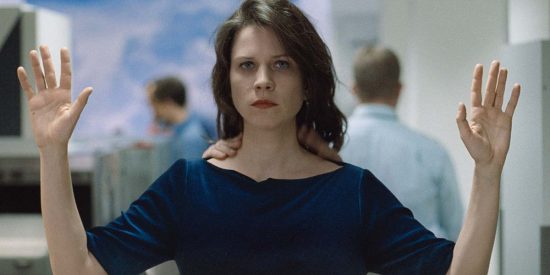TIFF 2020 Review: Preparations to be Together for an Unknown Period of Time
In Preparations to be Together for an Unknown Period of Time, a look across a room is the start of a love story for Márta (Natasa Stork), a 39 year old neurosurgeon in New Jersey. Having spent the last 19-20 years in the States practicing at a renowned neurology centre, she has a home, part of a beach house and job she adores, despite working seven days a week. Love however has eluded her, so now she is traveling back to her native Budapest to meet the man she spent one afternoon with at a conference. They exchange no contact information, but make a plan, a very “Before Sunrise” idea, to meet at 5pm in one month at her favourite place, the Pest end of the Liberty Bridge.
However, the man she’s meant to meet, János Drexler (Viktor Bodó), doesn’t show. Márta is disappointed, but their connection was so strong that instead of admitting defeat she instead opts to track him down at the hospital at which he is employed. She spots him in a parking lot and calls out to him, only to have him claim that he doesn’t know who she is at all (this all happens within the films first ten minutes, ensuring audience investment). She almost goes home, but instead Márta gets a rundown apartment overlooking the Liberty bridge where they were meant to meet and easily secures a job at the local hospital in order to try and reconnect with János.
What follows is a slow, smouldering mystery, a different type of he-said-she-said, where you never know who is pretending or telling the truth. It could very easily have fallen into Fatal Attraction territory, but instead writer-director Lili Horvát keeps the screws slowly and quietly turning so you never really know what is reality. Even Márta seeks help from a psychiatrist, convinced she must have imagined the entire thing. Placing the film within a medical setting, immersed in science and fact works well as a contrast for the film’s otherwise ample uncertainty.
Lead actress Stork is often mesmerizing as Márta able in equal turn to portray the serious neurosurgeon as well as the potentially unreliable narrator, often in the same scene. Director Horvát’s decision to shoot completely in 35 mm makes the film often have a nostalgic and romantic feel. Her ability to craft this slowly unfolding puzzle makes her a writer/director to watch. However, while its beginning is captivating, the film loses marks for its final act, where the build up and psychological manipulation abruptly end for an anticlimactic and unfulfilling conclusion allowing reality to emerge much too soon.











